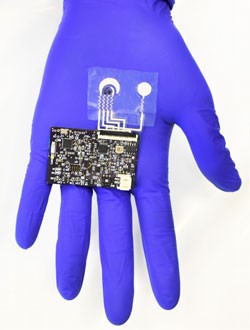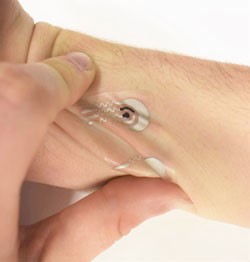Up until now, noninvasive technology like skin patches and sensors have been developed to sense the blood’s sugar levels and an individual’s vitals. The technology hadn’t been able to monitor the macro- and micronutrients in the body noninvasively, until now!
A team at the University of California San Diego has successfully developed a noninvasive, wearable, and flexible Vitamin C sensor to track the nutritional status of an individual.
Vitamin C is a water-soluble vitamin that is neither synthesized nor stored in the human bodies. The only natural source is food. It is primarily responsible for supporting immunity and wound healing by collagen production. Also, it aids in iron absorption. Some studies have suggested its role as an antioxidant.
It doesn’t end here; vitamin C has been studied in clinical trials advocating its role as an adjunct in reducing mortality rates in patients with acute respiratory distress syndrome (ARDS) and sepsis. Its role in these two diseases has prompted more research to look into the potential role of vitamin C in the recovery from the novel coronavirus, COVID-19, due to similar clinical features.
Having said that, with several essential functions of vitamin C, how can it be not important to keep an eye on the levels of vitamin C in the body?
This new flexible wearable sensor is an adhesive patch, which, when applied to an individual’s skin, detects the levels of vitamin C in the sweat by using flexible electrodes containing the enzyme ascorbate oxidase. This enzyme consumes oxygen to convert vitamin C to dehydroascorbic acid, generating a current that is then measured by the device. The sensor is paired to a board for wireless transmission of data.

Image Source: UCSanDiego
A Ph.D. Candidate in nanoengineering in Joseph Wang’s lab at the UC San Diego Jacobs School of Engineering and the first-author, Juliane Sempionatto, said:
“Wearable sensors have traditionally been focused on their use in tracking physical activity, or for monitoring disease pathologies, like in diabetes, this is the first demonstration of using an enzyme-based approach to track changes in the level of a necessary vitamin, and opens a new frontier in the wearable device arena.”
Has the sensor been tested in humans yet?
Four human subjects have been tested yet. These individuals had a good intake of vitamin C in the form of citrus fruit juices and vitamin C supplements. The device in question here proved to be highly sensitive to changes in the vitamin C levels in these individuals.
The electrodes of the vitamin C sensor also showed the potential for detecting temporal changes in the vitamin C levels in tears and saliva, demonstrating its cross-functionality.
Juliane Sempionatto also added, “Ultimately, this sort of device would be valuable for supporting behavioral changes around diet and nutrition. A user could track not just vitamin C, but other nutrients – a multivitamin patch, if you will. This is a field that will keep growing fast.”




